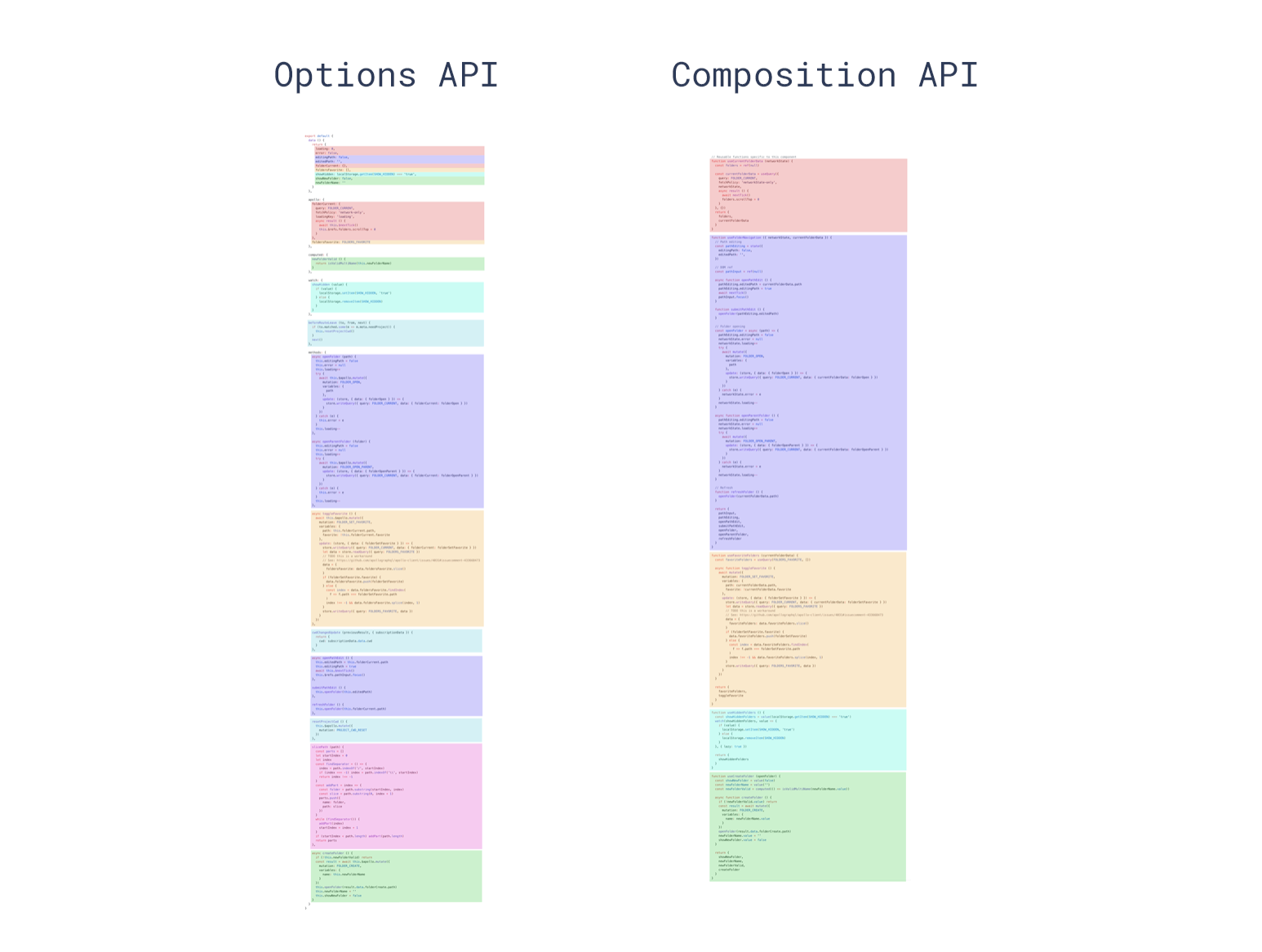Vue 3 in 3 Minutes ☘️
Earlier in the year I had the amazing opportunity to attend Vuejs.Amsterdam. It was my first overseas conference and an incredible opportunity to rub shoulders with so many individuals in a community that is tiny in Australia.
Enough of that, let’s jump into what’s new in Vue 3.
Composition API
The most significant feature change is the addition of the composition API. Similar to React hooks, it provides the developer with an alternative way to interact with the underlying Vue API.
The crux of the composition API is that it allows the developer to organise their code by logical concerns rather than component options.
The composition API seeks to address three issue with arranging components by options:
- Readability as components grow
- Current code reuse patterns have their drawbacks (mixins, scoped slots)
- Limited TypeScript support with Options API
In the code below we have two identical counters that increments a number and displays the squared total of that number. The first uses the options API and the second the composition API.

Here are a few things to note:
- The template is unchanged, the composition API only supplements the use of options on the Vue instance.
- The options are replaced with a single
setup()method on the component. - The data property is replaced by declaring a reactive reference with
ref()which then has it’s value accessed by calling the.valueproperty on the reference. - Pure JavaScript functions replace the methods of the options API.
- In the composition API the computed property is utilised by passing an anonymous function to the Vue 3 computed function.
- Properties that you want to access from the template need to be returned from the
setup()method.
The resulting flexibility of your concerns lets you rearrange your component into logical groups:

There are a few drawbacks with the composition API, however. These include:
- Return statement blowout
- Lack of consistency in accessing ref values through the .value property
- More flexibility requires more discipline
- beforeCreate() and created() hooks are not available in composition API
Typescript support
A common issue for Vue developers is difficulty with TypeScript support. Fortunately, Vue 3 is written in typescript and now has first class citizen support for Typescript (no additional tooling required 😲).
Fancy new lifecycle hooks
onRenderTracked()
This hook is called when a reactive dependency is first accessed in the render function
onRenderTriggered()
This is called when a render is triggered allowing us to inspect what dependency triggered a component to re-render.
Portals
Portals ‘teleport’ a DOM node to a different place in your DOM tree.
This resolves the conflict between: grouping related components (keeping modals where they are called) and ensuring the order of appearance is correct (z-index and placement in the DOM tree).
<!-- In some nested Vue component -->
<NestedComponent>
<Portal target="#popup-target">
<PopUp />
</Portal>
</NestedComponent>
<!-- Before closing body tag -->
<div id="popup-target"></div>Suspense
Suspense allows you to render fallback content until a condition is met (or a component resolved). It can be used for loading animations, placeholder content or lazy loading images. It is syntactic sugar to v-if.
<template>
<Suspense>
<template #default>
<UserProfile />
<FunnyCats />
</template>
<template #fallback>
<div>Loading...</div>
</template>
</Suspense>
</template>V-Model
Components support multiple v-models in Vue 3.
<LoginForm
v-model:username="username"
v-model:password="password"
/>Thanks for dropping by. Iʼm a web developer from Sydney, Australia. I hope whatʼs written here has either taught you something, given you some inspiration or provided you with a bit of entertainment.
Feel free to connect with me on LinkedIn.